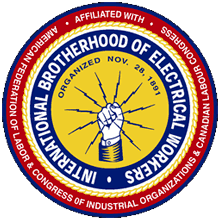September 6, 2011
By Robert Grey
At the dawn of the U.S. labor movement in the late 19th century, workers often paid for their jobs with their lives.
Mother Jones expressed the tumult of her time in her famous promise to “pray for the dead and fight like hell for the living.” Many workers died because of unsafe working conditions. Others died in the struggle to improve them.
Several of the occupational safety and health protections enjoyed by American workers today were won by the labor movement, which fought for laws and regulations to protect workers. While labor campaigns were ultimately successful, their demand was due to innumerable workplace tragedies.
In 1893, at the urging of railroad unions, Congress passed the Safety Appliance Act, the first federal statute to require safety equipment in the workplace. At that time, over 70% of railroad workers were injured within the first five years of employment.
In 1910, as the result of a series of deadly mine explosions and collapses (there were 3,000 mining deaths in 1907 alone), the United Mine Workers persuaded Congress to establish the United States Bureau of Mines to conduct research into mine safety. However, the Bureau of Mines –what later became the Mine Safety and Health Administration –had a rocky start. For one thing, the Bureau was not permitted to inspect mines until 1941, and no standards were promulgated until 1966. It didn’t help that the administration had no power of enforcement until 1969. Each advance was the result of a long campaign by the UMW to protect the safety and health of mine workers.
Workplace tragedy also gave birth to the workers’ compensation system. In 1910, New York State adopted a workers’ compensation law backed by trade unions. On March 24, 1911, the New York Court of Appeals declared the law unconstitutional, because it took the employer’s property (money) without regard to fault. The following day, 146 women were killed in the Triangle Shirtwaist fire. The public outcry resulting from the fire led to the enactment of dozens of laws addressing fire safety, elevator shaft safety, sprinklers, child labor, and other occupational safety and health problems. The New York State Constitution was later amended, and the Workers’ Compensation Law was re-enacted (and now upheld as constitutional).
In 1935, due to the efforts of the labor movement, the National Labor Relations Act and Social Security Act were passed. They were followed in 1938 by the Fair Labor Standards Act, which established the minimum wage and a 40-hour workweek. The Social Security program was amended in 1954 to add disability benefits and in 1961 to create Medicare.
Industrialization and industrial accidents increased significantly in the United States during World War II, but winning the war took precedence over safety. After the war ended, however, the workplace accident rate remained high and began to rise. In the two years before the enactment of OSHA, 14,000 workers died on the job each year, and millions more were injured. Many of the deaths and injuries were caused by the use of new industrial chemicals and compounds.
In 1970, after a long legislative battle, the Occupational Safety and Health Act was signed into law. It became effective on April 28, 1971, which is now known as Workers’ Memorial Day. The Act states that its goal is “to assure so far as possible every working man and woman in the Nation safe and healthful working conditions and to preserve our human resources.”
2011 marks the 100th anniversary of the Triangle Shirtwaist Fire and the 40th anniversary of OSHA, yet workers continue to suffer injury, illness and death on the job. In 2009, over 4,000 workers were killed on the job, and 50,000 more died from occupational disease. Millions of workers were injured as the result of work-related accidents. It is clear that OSHA has yet to achieve its goal of creating safe and healthy workplaces for America’s working people.
The history of occupational safety and health regulation will always be inextricably linked to the triumphs and tragedies of the labor movement. Its future depends on the movement too. Today, as much as ever, workplace safety must appear on the short list of each union’s agenda, honoring Mother Jones’s pledge to “fight like hell for the living.”



